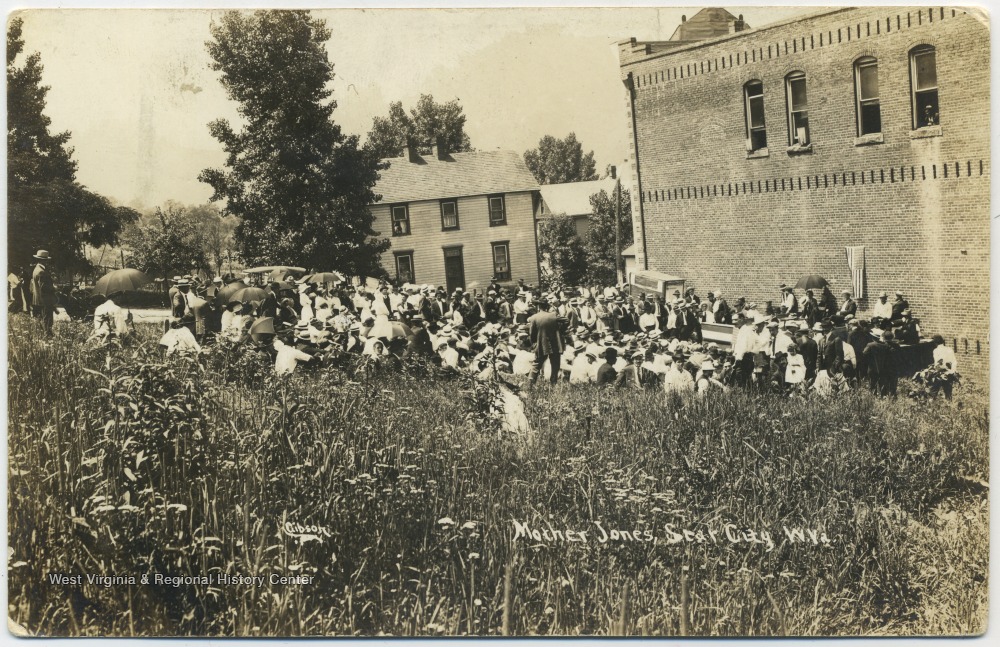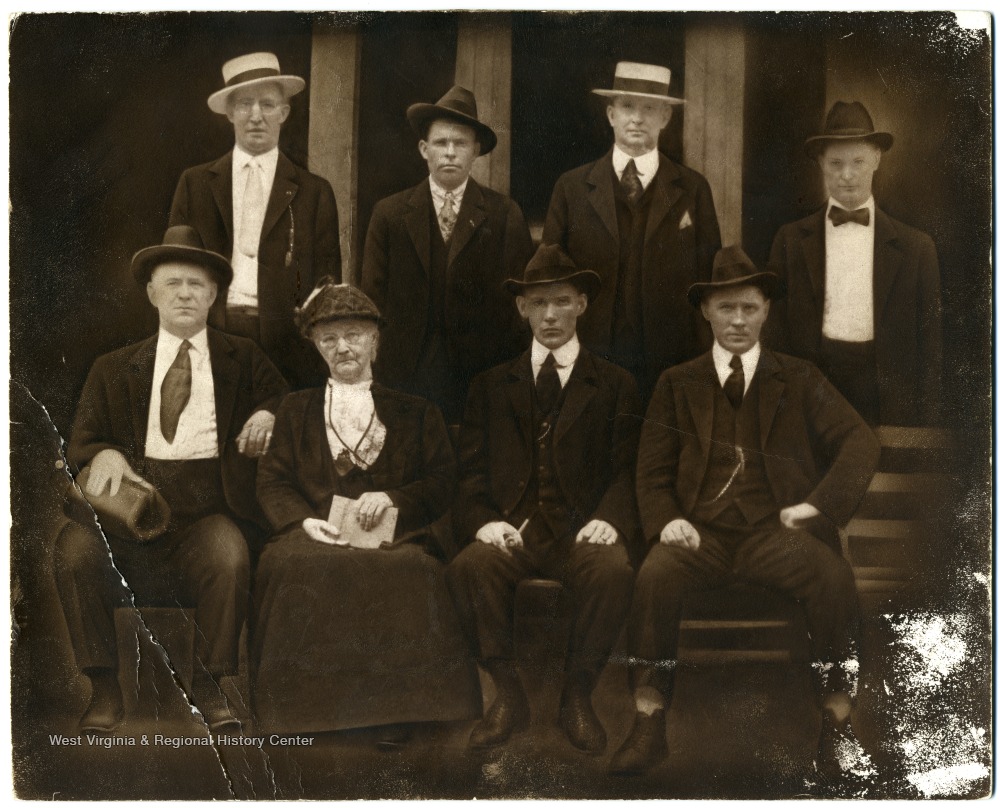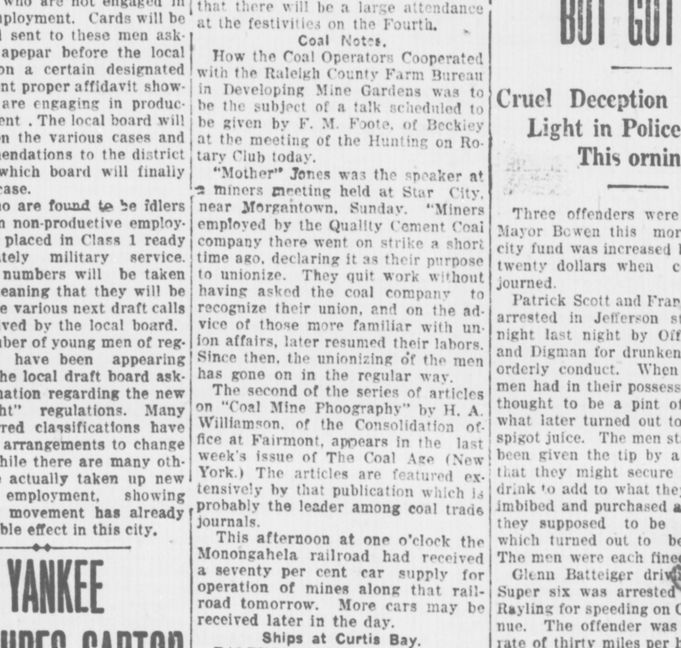Mother Jones in Star City, June 16, 1918
Posted by Admin.June 14th, 2021
Blog post by Angela Spatafore, Program Assistant, WVRHC
Over a century ago this week Mary Harris Jones, more commonly known as Mother Jones, gathered with miners in Star City to rally support for the miners’ union. Held on a Sunday morning, newspapers at the time reported that as many as 600 people attended with 400 of the miners voicing their desire to join the union after the event. Mother Jones was certainly a divisive figure in the labor movement of the early 1900’s, but she was able to draw a crowd to her with, as The Morgantown Post put it, “profanely eloquent” speaking skills.

As the WVRHC prepares for the annual West Virginia Day event this Friday, I’d like to take a minute to contextualize the Mother Jones’ involvement with the miners in 1918, just three years before the Mine Wars came to a militant halt on Blair Mountain. Looking at Mother Jones’ history, unionization in the West Virginia coalfields was not the only labor movement she rallied behind, but it was perhaps one of her most passionate campaigns. By 1918, she was a well-respected activist among miners, and the Star City meeting was organized by UMWA president, C. Frank Kenney, one of the union’s most influential leaders. However, it wasn’t just Keeney who was familiar with Mother Jones but also a number of notable pro-union West Virginians including William Blizzard, Fred Mooney, Sid Hatfield, among others.
Her activism and rallies previously led to her 1913 arrest following her support during the Paint Creek-Cabin Creek strike in 1912 and the subsequent martial law order. Her support of and popularity with the miners would eventually wane. In 1921 prior to the Battle of Blair Mountain, Jones attempted to deter the armed miners as they prepared to march by claiming to have a telegram straight from President Warren himself that promised an end to violence if the miners backed down. However, Jones was unable to present the telegram when asked, which broke her trust with the miners and caused her to leave West Virginia.

In this photo, we can see Mother Jones sitting alongside Sid Hatfield, police chief of Matewan during the Matewan Massacre and whose death fueled the March on Logan and Battle of Blair Mountain.
Regardless, Mother Jones remains an important figure of discussion in the early 20th century West Virginia coalfields. As a reminder, please join us at 10 AM on Friday June 18th for our West Virginia Day event, The Road to Blair Mountain: Commemorating the West Virginia Mine Wars. The program will feature presentations by William Hal Gorby, Assistant Teaching Professor of History at WVU, and Charles B. Keeney, Assistant Professor of History at Southern West Virginia Community and Technical College, founding member of the West Virginia Mine Wars Museum, and author of The Road to Blair Mountain. Please check our website for more information, and please register for the event.
For additional reading, I used the following books available through WVU Libraries and the WVRHC in my research for this post:
The Autobiography of Mother Jones by Mother Jones and Mary Field Parton
Struggle in the Coalfields: The Autobiography of Fred Mooney by Fred Mooney
The Court-Martial of Mother Jones by Edward Steel






